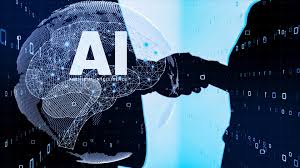Artificial Intelligence (AI) continues to accelerate at an unprecedented pace, shaping industries and redefining possibilities across the globe. As we move deeper into 2025, several emerging AI trends promise to revolutionize how we live, work, and interact with technology. From enhanced generative models to AI governance frameworks, understanding these trends is key for businesses, developers, and individuals looking to stay ahead in the AI-driven future.
1. Generative AI Gets Smarter and More Creative
Generative AI, which includes tools that create content such as text, images, and even music, has taken a giant leap forward. Models like GPT-4 and beyond have shown remarkable abilities to produce human-like content. In 2025, expect generative AI to become even more sophisticated, enabling hyper-realistic video generation, personalized virtual assistants, and immersive experiences in gaming and entertainment. Businesses will increasingly use generative AI for content creation, marketing, and design automation.
2. AI-Powered Autonomous Systems Expand
Autonomous technologies — including self-driving cars, drones, and robotics — will see major advancements. AI algorithms are becoming better at navigating complex environments and making real-time decisions. In 2025, we’ll see wider adoption of autonomous delivery services, AI-driven manufacturing robots, and smart infrastructure, making industries more efficient and reducing human risk.
3. AI Ethics and Regulation Become Central
As AI technologies impact more facets of daily life, governments and organizations worldwide are pushing for stronger ethical guidelines and regulatory frameworks. In 2025, expect clearer policies addressing AI transparency, bias mitigation, data privacy, and accountability. This regulatory momentum aims to build trust in AI while preventing misuse and protecting human rights.
4. AI and Edge Computing Integration
The combination of AI with edge computing — processing data closer to its source rather than in centralized data centers — will accelerate. This trend allows faster, more efficient AI applications, particularly in IoT devices, smartphones, and smart sensors. In 2025, edge AI will enable real-time analytics for healthcare monitoring, smart cities, and industrial automation without relying on constant cloud connectivity.
5. Multimodal AI Systems
Multimodal AI models that can process and generate multiple types of data — such as text, images, audio, and video — are gaining traction. These systems understand context better and provide richer interactions. In 2025, expect to see AI assistants that can seamlessly combine speech, vision, and text inputs, making interfaces more intuitive and human-like.
6. AI for Climate Change and Sustainability
AI’s potential to tackle global challenges like climate change is expanding rapidly. In 2025, AI-driven models will optimize energy consumption, improve climate prediction accuracy, and support sustainable agriculture. Smart grids, waste management, and environmental monitoring will benefit from AI-enabled insights, driving greener economies.
7. Personalized AI in Healthcare
Healthcare will continue to be transformed by AI’s ability to analyze individual data and recommend personalized treatments. In 2025, AI-powered diagnostics, virtual health assistants, and predictive analytics will become commonplace, improving patient outcomes and reducing healthcare costs globally.
8. Democratization of AI Tools
More user-friendly AI platforms and no-code/low-code tools will empower non-experts to build AI applications. This democratization means businesses of all sizes and individuals can leverage AI to innovate without needing deep technical expertise, expanding AI’s reach and impact.
9. AI-Augmented Human Collaboration
Rather than replacing humans, AI is increasingly seen as a collaborator. In 2025, AI-powered tools will augment creativity, decision-making, and productivity in workplaces. From AI-assisted coding to real-time language translation, humans and machines will work side by side more seamlessly than ever before.
10. Advances in Natural Language Understanding
Natural Language Processing (NLP) continues to improve, enabling AI to better understand context, sarcasm, and nuanced emotions. In 2025, conversational AI systems will become more empathetic, context-aware, and capable of maintaining long-term dialogues, transforming customer service, education, and entertainment.
Conclusion
The AI landscape in 2025 is set to be dynamic and transformative. From smarter generative models and autonomous systems to ethical governance and sustainability initiatives, AI’s evolution will touch every sector of society. Staying informed about these trends is essential for businesses and individuals aiming to harness AI’s full potential while navigating its challenges responsibly. The future of AI is bright — and it’s closer than we think.



